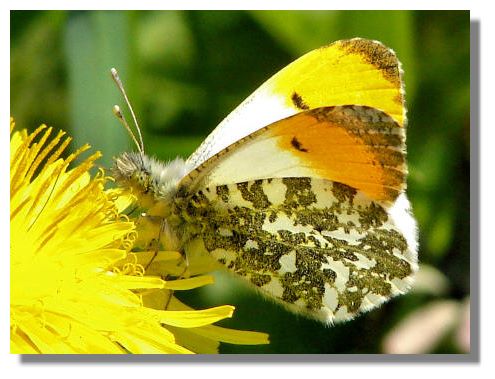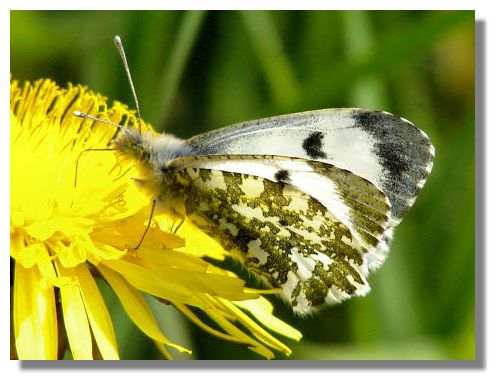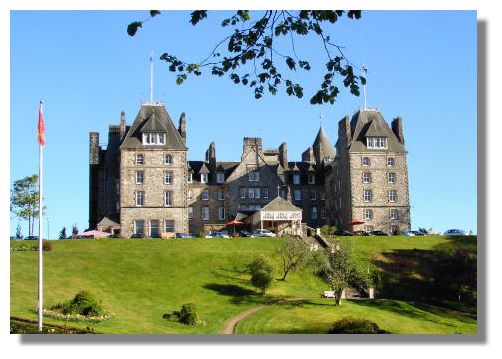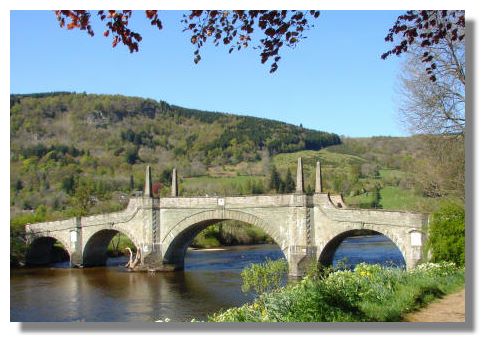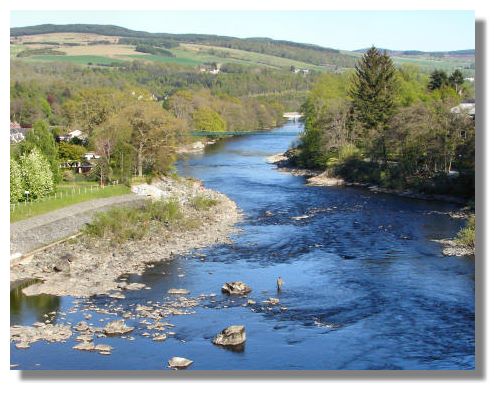Each week the Rampant Scotland Newsletter includes a number of photographs which illustrate the weather and the seasons, plus the flora and fauna of the current week around Scotland. This separate "colour supplement" displays some more pictures, in a larger format. Here is this week's crop of Scottish views!
Many species of butterfly have declined in numbers but the beautiful Orange Tip has been making a rapid recovery over the last 25 years, especially in Scotland. Maybe it's because I now know where to look, but there seem to have been more butterflies around so far this year. This is a male Orange Tip - they come out of their chrysalis 7/10 days before the female. This one was having a sip of nectar from dandelion.
As is often the case in nature, the female Orange Tip is not nearly as colourful as the male. The upper side of her wings look just like the more common Small White butterfly. In fact, this is the first picture I have ever managed to take of a female Orange Tip. They are usually flitting rapidly along hedgerows, road verges, and woodland edges. The mottled pattern on the underside hindwings provides excellent camouflage when they roost on flower heads.
There are many varieties of Trillium (also known as Wood Lily), with their triangle of three leaves topped by three-petalled flowers. They originated in North America and prefer cool, shady conditions. This one was pictured earlier this week growing in the woodlands of Cluny House in Perthshire.
There are many fine hotels in Pitlochry in the heart of Perthshire, including Atholl Palace Hotel, seen here. The building is set high above the town and is a prominent feature on the approach to Pitlochry from the south. With many conifers growing in its grounds, it provides a home for the increasingly rare red squirrel.
The tourist route from Crieff to Aberfeldy in Perthshire goes through the attractively named "Sma' Glen" - its original Gaelic name was "The Narrow Glen". The river Almond flows through the glen and the only trees are those near the water's edge.
Doronicum, with their golden yellow, daisy-like flowers are popular garden plants, particularly as they come into flower before many of the main herbaceous border plants. At Culzean Castle Country Park, however, large swathes of Doronicum are growing wild in the woods beside the Swan Pond (where newly-hatched cygnets were to be seen this week).
After the Jacobite Uprising of 1715, there was a flurry of road building in the Highlands from 1723 onwards, so that government troops could be moved quickly to suppress any future attempts to restore a Jacobite monarch. The building project was master-minded by General George Wade and his bridge over the river Tay at Aberfeldy was constructed in 1733 to the design of architect William Adam, father of the more famous Robert Adam. General Wade considered his bridge at Aberfeldy to be his greatest accomplishment.
Although this picture looks as though it might have been taken from a helicopter or a low-flying aircraft, it was actually from the top of dam forming the river Tummel hydro-electric scheme at Pitlochry. The lack of rainfall has meant that the river below is at a very low level - and the salmon fisherman is taking advantage of that and wading out almost to the middle.
If you want to look back at earlier editions of this Colour Supplement, there is an Index Page
